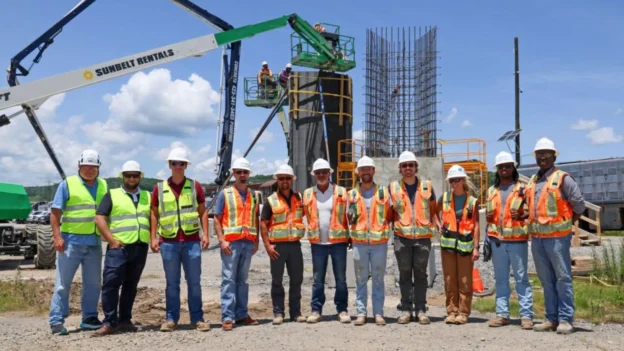The Hermes reactorreactor, developed by Kairos Power at Oak Ridge, is being built with 3D printed molds. These molds, made from large-format composite polymers, are used to form structural components of the reactor’s shielding. The technology reduces time and costs compared to conventional methods and has been approved by the U.S. Nuclear Regulatory Commission.
A structural change in formwork design
Thanks to a collaboration between Oak Ridge National Laboratory (ORNL), Barnard Construction and the Manufacturing Demonstration Facility (MDF), an additive manufacturing methodology has been developed to produce molds with complex geometries and tight and tight tolerances. Three-dimensional composite structures allow high-precision concrete to be cast in less time and at lower costs than conventional steel- or wood-based methods.
The project has also mobilized companies such as Airtech, TruDesign, Additive Engineering Solutions and Haddy to consolidate a supply chain specializing in additive manufacturing for the nuclear sector. Barnard Construction has been instrumental in adapting the molds to the construction site, incorporating real-time design improvements.
3D printing for the shielding of the Hermes reactor
The molds, used to form reactor shield columns, allow designs to be validated through rapid feedback loops. Edward Blandford, co-founder and chief technology officer of Kairos Power, noted that this approach accelerates development by facilitating early collaboration with regulatory agencies and reducing implementation risks.
Reinforced polymeric molds, printed with large-format technology, have been shown to withstand the pressure of concrete pouring without losing structural integrity. This was made possible by new design strategies developed by ORNL’s composite innovation group, led by Ahmed Hassen. The modularity and precision of these solutions far exceed the limitations of traditional forms.
The Role of SM2ART Moonshot and the University of Maine
This initiative is part of the SM2ART Moonshotproject, funded by the Department of Energy and led by MDF and the University of Maine. In the coming months, it is expected to expand production of molds for radiological shielding and other reactor parts, using biocomposites derived from wood waste and applying digital twins for quality control.
Follow us on social networks and don’t miss any of our publications!
YouTube LinkedIn Facebook Instagram X (Twitter) TikTok
Source and photo: Oak Ridge National Laboratory

